
Isabel Beane is a quiet girl who lives with five siblings in a home with hubbub, hullabaloo, and “too muchness.” At school, Isabel feels anxious in class when a new girl behaves unkindly. Find out how Isabel learns to speak up for herself in this accessibly told novel. Resources about autism and anxiety are included.
Invisible Isabel

A child finds a book that thinks it’s invisible. The book does not realize it is a tale told in Braille. Textured colors begin to emerge on white pages as the story comes to life under the fingers of its reader. A note about Braille concludes this special title.
The Invisible Story
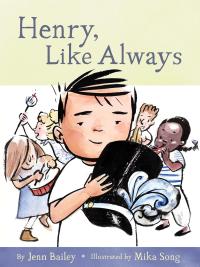
Henry likes Classroom Ten. He likes how it is always the same. But this week, Henry’s class will have a parade, and a parade means having Share Time on the wrong day. A parade means playing instruments that are too loud. A parade means this week is not like always. Join Henry as he navigates the ups and downs of marker missiles, stomach volcanoes, and days that feel a little too orange. From the creators of the Schneider Family Honor-winning picture book A Friend for Henry, this warmly funny book starring a child on the autism spectrum is a reassuring read for school-bound kids of all stripes.
Henry, Like Always

Fefa struggles with words. She has word blindness, or dyslexia, and the doctor says she will never read or write. Every time she tries, the letters jumble and spill off the page, leaping away like bullfrogs. How will she ever understand them? But her mother has an idea. She gives Fefa a blank book filled with clean white pages. “Think of it as a garden,” she says. Soon Fefa starts to sprinkle words across the pages of her wild book. She lets her words sprout like seedlings, shaky at first, then growing stronger and surer with each new day. And when her family is threatened, it is what Fefa has learned from her wild book that saves them.
The Wild Book
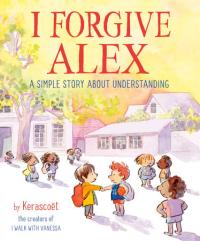
Expressive ink and watercolor illustrations detail the story of a playground mishap. Alex tosses a ball that accidentally knocks another child’s artwork into a puddle. Other kids pick up on that child’s unhappiness and give Alex the cold shoulder until the child whose artwork got wet asks Alex to play ball again. Suggestions for readers conclude this engaging and relatable book.
I Forgive Alex

Ben loves baseball. He loves the lines of diamond-shaped field and the dome of the pitcher’s mound. What Ben doesn’t like is reading. Ben has dyslexia, which means letters and sounds get jumbled up in his brain, and then the words don’t make sense. But when Ben starts looking at reading like he looks at baseball, he realizes that if he keeps trying, he can overcome any obstacle that comes his way. In this empowering story by California Governor Gavin Newsom, inspired by his own childhood diagnosis of dyslexia, readers will learn that kids with the determination to try (and try again) can do big things.
Ben and Emma’s Big Hit

Yogi Berra was one of a kind. He didn’t excel in school but is still quoted today. And in spite of the naysayers, Yogi went on to become an admired ballplayer. His story is told in rich, detailed illustrations and lucid text, interspersed with “Yogi-isms”. In addition to more detail about Berra’s life and times, baseball aficionados will appreciate the statistics included in the back matter.
Yogi: The Life, Loves, and Language of Baseball Legend Yogi Berra

Some people talk more than they listen, like young Owen. But only until he gets laryngitis! Owen not only learns that others have good ideas but also gains the ability to listen more (though he’s still talkative). Children and teachers alike will recognize Owen and his classmates in both lighthearted (nonstop) conversation bubbles and gentle illustrations.
Quiet Please, Owen McPhee!
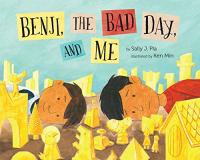
Like the narrator, everyone sometimes has a bad day. Samuel’s started at school and didn’t improve at home. But his little brother Benji helps Samuel feel better as Benji has been made to feel better: by becoming a burrito! Samuel knows that he and Benji will both be “okay, That’s because the two of us are brothers.” Warm and empathetic, the story is based on the author’s sons, one who is autistic. See our interview with the author, Sally J. Pla ›
Benji, the Bad Day and Me
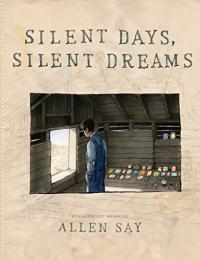
James Castle was born deaf and mute in 1899 on a farm in Idaho. The story of this child who grew up to become an artist is told in his nephew’s voice and illustrated in dark-hued illustrations that evoke not only the artist’s work but also his difficult life. Allen Say’s appreciation of this artist and his work is sophisticated and memorable, presenting a unique and truly original artist.
Silent Days, Silent Dreams
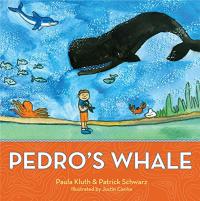
Pedro, a young boy who loves whales more than anything, is heartbroken when he’s told to put away his favorite toy whale on the first day of school. But then Pedro’s teacher discovers the secret to helping him do his best work: not only giving him his whale, but also incorporating his special interest into the whole curriculum. Soon, Pedro’s whale is helping all the children learn, as the teacher works whales into math lessons, storytime, simple science experiments, and more! Pedro’s whale helps him make friends, too, as the other children start to share his special interest.
Pedro’s Whale

Louis, a self-taught space expert is delighted to learn that his teacher has sent him to the principal’s office to attend personal space camp. Eager to learn more about lunar landings, space suits, and other cosmic concepts, Louis soon discovers that he has much to learn about personal space right here on earth. Written with style, wit, and rhythm, personal space camp addresses the complex issue of respect for another person’s physical boundaries. Told from Louis’s perspective, this story is a good resource for parents, teachers, and counselors who want to communicate the idea of personal space in a manner that connects with kids.
Personal Space Camp

All of Louis thoughts are very important to him. In fact, his thoughts are so important to him that when he has something to say, he erupts, or interrupts others. His mouth is a volcano! This story takes an empathetic approach to the habit of interrupting and teaches children a witty technique to capture their rambunctious thoughts and words for expression at an appropriate time. Told from Louis’s perspective, the story provides parents, teachers, and counselors with an entertaining way to teach children the value of respecting others by listening and waiting for their turn to speak.
My Mouth Is a Volcano!

NO is RJ s least favorite word … and he tries his best to convince his dad, his mom, and his teacher to turn No into Maybe or We’ll see or Later or I’ll think about it. Even though he doesn t have much success, RJ keeps arguing until his teacher suggests that he try to join her classroom s Say YES to NO Club. If RJ can learn how to accept No for an answer and to disagree appropriately with his teacher and parents, he can add his name to the club’s Star Board.
I Just Don’t Like the Sound of No!

Louis is a verb! He has a lot of trouble focusing and he is always doing something, but the problem is usually it’s the wrong something. It’s hard to be a verb! My knees start itching, my toes start twitching, my skin gets jumpy, others get grumpy. When it comes to sitting still it s just not my deal. Haven’t you heard… I am a verb! Louis mom teaches him how to focus by showing him a few hands on ideas that anyone can try. A helpful book for all who struggle with paying attention.
It’s Hard To Be a Verb!

Jay can make his own breakfast, dress himself, and play by himself, but sometimes he feels sad and wishes for a friend. When a magical horse appears and befriends Jay, his wish comes true. This interactive book was developed for use with children with developmental and learning differences and disabilities, including autism spectrum disorder, ADHD, and dyslexia. It is designed to help educators, parents, and caregivers teach children about language, reading, story comprehension, functional skills, and basic concepts.
Jay and Ben
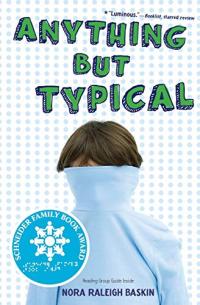
A story told entirely from the point of view of Jason, an autistic boy who is a creative-writing whiz and deft explainer of literary devices, but markedly at a loss in social interactions with “neurotypicals” both at school and at home. He is most comfortable in an online writing forum called Storyboard, where his stories kindle an e-mail-based friendship with a girl. The author describes Jason’s attempts to interpret body language and social expectations, and ultimately how Jason moves through his failures and triumphs with the same depth of courage and confusion of any boy his age.
Anything But Typical

From inside Caitlin’s head, readers see the very personal aftermath of a middle school shooting that took the life of the older brother she adored. Caitlin is a bright fifth grader and a gifted artist. She also has Asperger Syndrome, and her brother, Devon, was the one who helped her interpret the world. A compassionate school counselor works with her, trying to teach her the social skills that are so difficult for her. Through her own efforts and her therapy sessions, she begins to come to terms with her loss and makes her first, tentative steps toward friendship. (Winner of the National Book Award)
Mockingbird
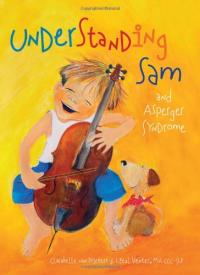
Sam doesn’t like his pancakes to touch, his coat hurts his skin, and his sister is annoyed by his incessant singing. But once he is diagnosed, teamwork-based support helps Sam’s life become a little easier. The book includes 10 helpful tips geared toward children, showing them how to respect and accept differences as well as to interact with a classmate or friend with Asperger’s.
Understanding Sam and Asperger Syndrome
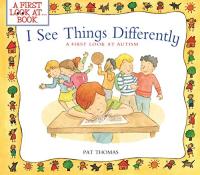
A sensitive, gently illustrated book about helping a child understand autism in a sibling, playmate, or classmate. The storyline is simple and easily accessible to younger children, who will learn that exploring the personal feelings around social issues is a first step in dealing with them.
I See Things Differently: A First Look at Autism

Julie can’t wait to go to the park and feed the ducks with her big sister. Her little brother, Ian, who has autism, wants to go, too. Ian doesn’t have the same reactions to all the sights and sounds that his sisters have. Through its simple plot, the story conveys a complex family relationship and demonstrates the ambivalent emotions Julie feels about her autistic brother. This natural mix of resentment, anger, isolation, loyalty, and love is explained in preliminary notes written by professional pediatric caregivers.
Ian’s Walk: A Story about Autism

When an autistic child joins a mainstream school, many children can find it difficult to understand and cope with a student that is somewhat ‘different’ to them. This story encourages other children to be mindful and patient of the differences that exist and to also appreciate the positive contribution that an autistic child can make to the group.
A Friend Like Simon

This uplifting story follows space-obsessed Lester Musselbaum as he experiences the challenges of his first days of public school: making friends, facing bullies, finding his “thing,” and accidentally learning of his autism-spectrum diagnosis. A touching peek into the life of a sensitive autism-spectrum boy facing the everydayness of elementary school.
Superstar

After the mother skunk is killed, Bixby “Bat” Alexander Tam’s veterinarian mother brings home its kit to be kept only until its old enough to be released. Who would have thought Bat would want to keep the baby skunk, named Thor? Is it really okay for a skunk to become a pet? Bat is a unique character and the story offers a deeply heartfelt glimpse into the life of a boy on the autism spectrum, presented realistically in this touching (and surprisingly informative) novel.
